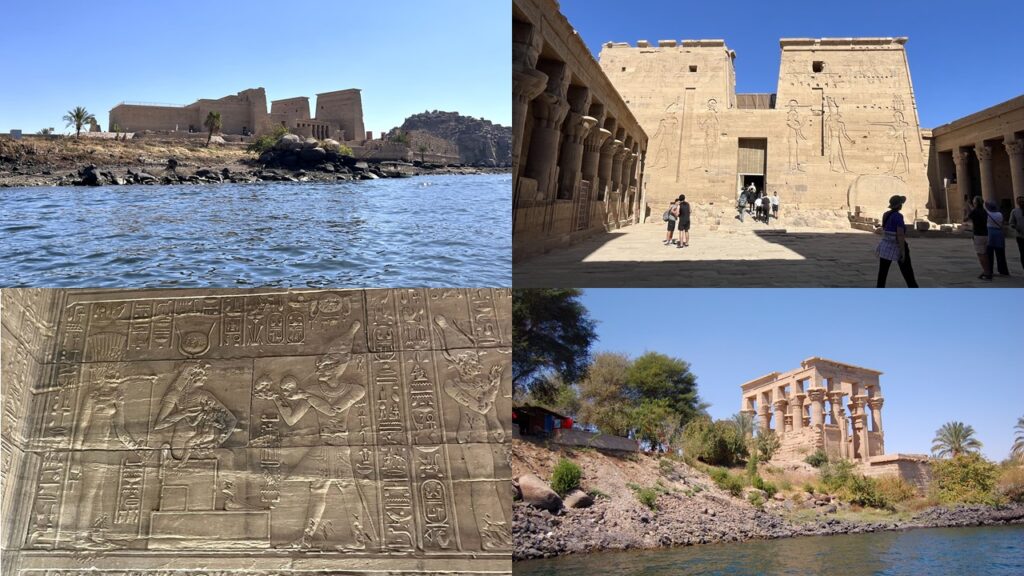
Clockwise from Upper Left: Philae temple from Nile, Entrance to Philae temple, Trajan’s bed, Pharaoh with gods (Photos by Don Knebel)
Today, in our continuing tour of Egypt, we begin our visit to Aswan at the Philae temple complex, which exists only because of an extraordinary engineering feat.
When Alexander the Great conquered Egypt in 332 B.C., he was proclaimed pharaoh and considered himself a god. After Alexander’s death in Babylon in 323 B.C., his general continued the idea, becoming Pharaoh Ptolemy I. His son, Ptolemy II, built a temple to the Egyptian Goddess Isis at the site of earlier temples on Philae Island in the Nile River near Aswan. The new temple, mimicking much older temples, showed Ptolemy II among the Egyptian gods. Later Ptolemaic pharaohs added their own touches to the temple. When Cleopatra, the last Ptolemaic pharaoh, died in 30 B.C., Romans took control of Egypt and their emperors began acting like pharaohs. In about 100 A.D., Emperor Trajan added to the Philae temple site an aesthetically pleasing 14-column pavilion that served as a river entrance to the temple and a place for storing the boat on which a statue of Isis traveled on the Nile. The walls of what is often called “Trajan’s bed” were decorated with images of Trajan offering incense to Isis and Egyptian gods. Christians later converted the temple into a church and built other churches on the island.
The first Aswan dam partially submerged the Philae temple and Trajan’s bed. With the building of the Aswan High Dam, the Philae structures were threatened with total submersion. Engineers working with UNESCO cut the buildings into 47,000 blocks and removed the temple complex from Philae, block by block, and reassembled the buildings on the higher Agilkia Island nearby, modified to resemble Philae Island. Today, the temple to Isis and Trajan’s bed are among the most intact of all ancient Egyptian temples. They can be reached only by boat, often a traditional felucca.